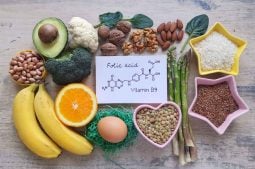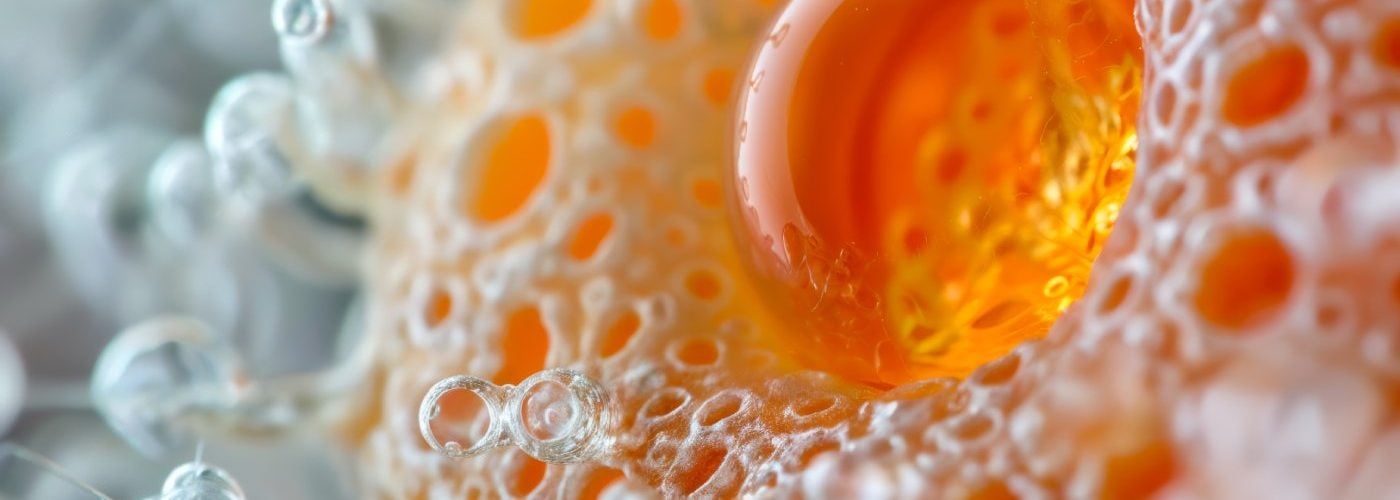
Ovarian follicle: you might never have heard of it before, nor expected them to be of such importance to you and your fertility. However, follicles are perhaps one of the most intrinsic parts of a woman’s reproductive system. How many follicles you have is often a straightforward way of determining how likely you could be to conceive naturally or which assisted fertility treatment such as IVF would work well for you.
Ovarian follicles and fertility are inextricably linked and, as you begin your journey into assisted fertility treatment, it can be helpful to understand just what follicles are and what part they play in the process. In this article, we will explain what a follicle is exactly, how many eggs are in a follicle, follicle size needed for IVF, how follicles on your ovaries can be monitored by ultrasound and hormone testing, and what your options are should no eggs be found in the follicles during IVF.
What is an ovarian follicle?
An ovarian follicle is a small sac of fluid found on the outside layer of the ovaries, which contain immature eggs (oocytes). When the time comes, and the follicle has grown to the right size, it ruptures and releases a matured egg ready to be fertilised. A common misconception is that each follicle releases multiple eggs. However, as to the question of how many eggs are in a follicle, the answer is: just one.
This is the scientific process behind ovulation, which generally occurs monthly for most women between puberty and menopause. Several follicles will begin to develop with each cycle, but generally just one of them will release an oocyte. The follicles that don’t release an egg disintegrate. This process is known as atresia, and can actually happen at any stage during the follicle’s development.
How many ovarian follicles should an ovary have?
It is difficult to say how many follicles an ovary should have as it is impossible to actually count how many follicles any woman has in her ovaries. Until a follicle begins to develop, it is known as a primordial follicle. These primordial follicles are microscopic, measuring just 25 micrometres (0.025 millimetres). They are too small to be seen with the naked eye, and cannot be picked up on an ultrasound or any other test.
However, once hormonal signals trigger the development of follicles and they start to mature and grow, they become known as antral follicles and measure up to 10 mm. These are then visible on an ultrasound and can be counted. This doesn’t show the total amount of follicles a woman has on her ovaries, but just noting the amount of visible antral follicles can help to indicate the state of a woman’s ovarian reserves (the amount of eggs left).
Ovarian follicles and fertility
An antral follicle count (AFC) ultrasound can be carried out during the initial stages of fertility investigation. This will help you decide whether assisted fertility treatments such as IVF might be an appropriate option for you.
Follicle growth and development are then carefully monitored during fertility treatments as well. At IVI, a series of 3 or 4 ultrasound scans are carried out and the amount of oestradiol in the blood is also measured to check that there is normal growth and development of the follicles during treatment.
Oestradiol is a type of oestrogen, which is the major sex hormone in women and is secreted by the ovarian follicles. As the follicles grow and develop each month they produce oestradiol, so having a blood test to check your oestradiol levels is important to measure not only the number of follicles and eggs being produced but also how healthy they are.
Ovarian follicle size needed for IVF
As preparation for IVF treatment, it can be recommended to undergo ovarian stimulation. This consists of the administration of daily injections which cause the ovaries, instead of producing a single ovum which is what they do naturally each month, to produce more oocytes so that a larger number of embryos can be obtained. Producing a larger quantity of available eggs can, of course, increase the chances of treatment being successful.
However, what matters most is the quality of the eggs being developed, and so, at IVI, we will also monitor the size and health of the follicle to make for optimum results. When the follicles reach an adequate size (normally around 18–25 mm), and we consider that there are a suitable number of oocytes, we schedule follicular puncture 36 hours after administering an injection of the hormone hCG. This causes the oocytes to mature in a similar way to the way they would in a natural cycle.
What happens if there are no eggs in the ovarian follicles in IVF?
At IVI, we take every measure possible to promote the successful and healthy growth of your follicles and to encourage an increased production of eggs to give the IVF treatment optimal chances of success.
On rare occasions, the follicular puncture might result in no eggs being retrieved from the follicles. Even though the follicles may be healthy and growing, it doesn’t necessarily mean they will produce an egg. If there are no eggs in the follicles then the IVF treatment will not be able to be completed on that occasion. This doesn’t mean that a subsequent treatment won’t be successful, as follicle response varies and egg growth can be affected by a variety of factors. There is also the possibility of using an egg donor, should you not be able to conceive using your own eggs.
What happens if there are too many ovarian follicles?
When receiving ovarian stimulation, there is the potential to develop Ovarian Hyperstimulation Syndrome (OHSS). This is when your ovaries overstimulate and produce too many follicles and mature eggs. Lots of follicles in the ovaries can lead to health complications and OHSS needs to be dealt with carefully.
If you’re under 30, have polycystic ovary syndrome (PCOS) or have had OHSS previously, then you may be more at risk. During your initial testing and screening process, we will take these factors into consideration and be able to detect if you’re at risk of developing OHSS, taking the necessary steps to minimise this during your treatment cycle.
We also carefully monitor your follicle growth throughout treatment and will be able to immediately identify if OHSS develops. In most cases this shouldn’t affect your fertility treatment, which should be able to continue as planned.
Are ovarian follicles important for IUI treatment?
IUI (intrauterine insemination) is one of the most straightforward assisted fertility treatments. The man’s sperm is prepared in the laboratory and then placed directly in the woman’s uterus, increasing the chances that the sperm will reach and fertilise the egg. IUI can be a highly successful treatment for couples with either low sperm motility or difficulties with ovulation, or for those with undetermined reasons for subfertility.
As previously discussed, the more follicles producing healthy eggs there are, the higher the chances that a successful natural or assisted conception will occur. This means that follicle health and growth are important for IUI treatment. There is therefore the option to assist the process of IUI by having ovarian stimulation, as with IVF.
What is the IUI success rate with one ovarian follicle?
On average ten to twelve follicles are produced per cycle, but this can vary from person to person and is affected by multiple factors such as age, medical history and your individual response to ovarian stimulation.
Although having a good number of follicles is ideal for fertility treatment, it doesn’t necessarily mean that having less will impact your chances of success. It is the quality of the eggs produced that matters most rather than the quantity. Therefore it is possible to still experience successful fertility treatment even if you only produce a few follicles or even just one healthy, mature follicle that releases a viable egg.
Remember, it only takes one egg to make a baby and it only takes one follicle to produce a healthy egg. Therefore, depending on every case, there can be a very good IUI success rate with even just one follicle.
Find out more at IVI
IVI has been offering the best techniques possible for 35 years, since its foundation in 1990, and over 250,000 babies have been born with the group’s help.
To find out more information or to talk with someone about our assisted fertility treatments, you can call or use the online contact form and an IVI specialist will get in touch to talk to you with no obligation.





10 Comments
Dear Ann,
We would advice you to speak to your doctor so he can explain his decision to you and give you the medical reasons for this.
i am 40.5 year single woman looking to get pregnant using a donor. Since 1.5 years I have irregular periods with frequency every 6 weeks, periods until then were always regular and medical treatments for the same. Never tried to get pregnant before.
In Nov. 2020, on day 3 my AMH in <0.1 ng/ml, TSH was 4.17, FSH 3.9 IU/l, LH 5.7 IU/L, E2 244 ng/l, prolactin 333 mIU/l.
Started taking Levothyroxine 50ug. TSH in Dec. 2020 was 1.21
IVF cycle 1:
Day 1-6 was 300 IU HMG, day 7 showed a small follicle. Dosage increased to 450 IU. E2 on day 7 was 76 pg/ml. Cetrorelix was added. Day 9 – E2 was 133, marginal increase in follicle. Clomiphene citrate was added. Day 11 – Follicle still 15mm, 1 additional small follicle seen. E2 was 208, LH 6.54. HMG increased to 750 IU along with Cetrorelix and Clomiphene. Day 14 – 2 follicles were 18mm, 3rd follicle was 14-15 mm, E2 was 328 and LH 7.3. Trigger of 10000 IU HCG was given. During egg retrieval, only 1GV was retrieved.
IVF cycle 2:
day 2 scan showed a cyst which was aspirated, day 3-7 Lethroz 2.5mg, day 4-7 300 IU HMG, day 7 scan – cyst shrunk, 1 follicle 14mm, day 8 375 IU HMG and cetrorelix. Day 9 scan yet to be done.
What would you suggest?
Hi, thank you for the given information.
Hello Joyce, we suggest you visit a specialist to get a medical advice. We can’t give you an opinion without knowing your case, a gynecologist will sure help you.
Great information for a mother supporting her daughter going through IUI.